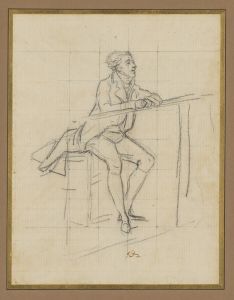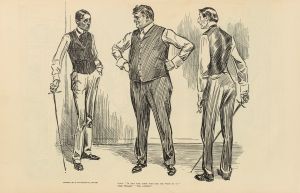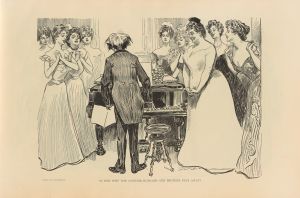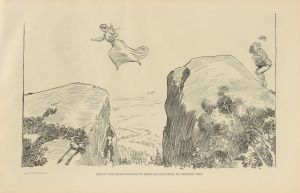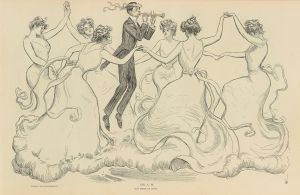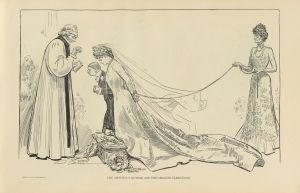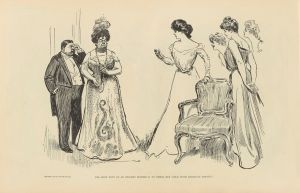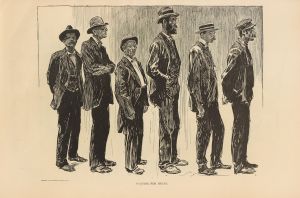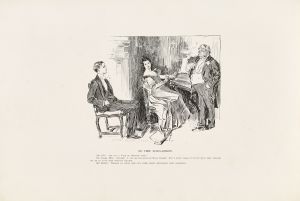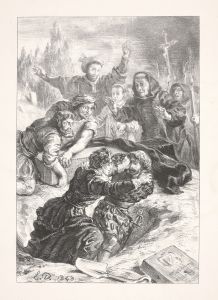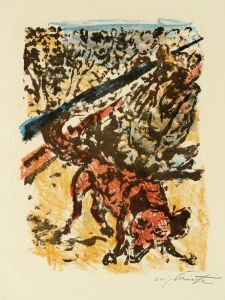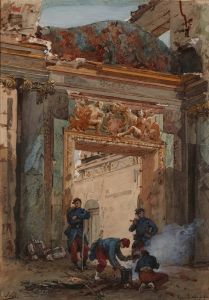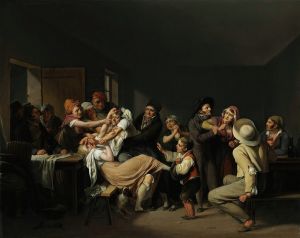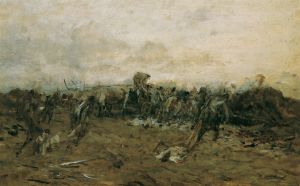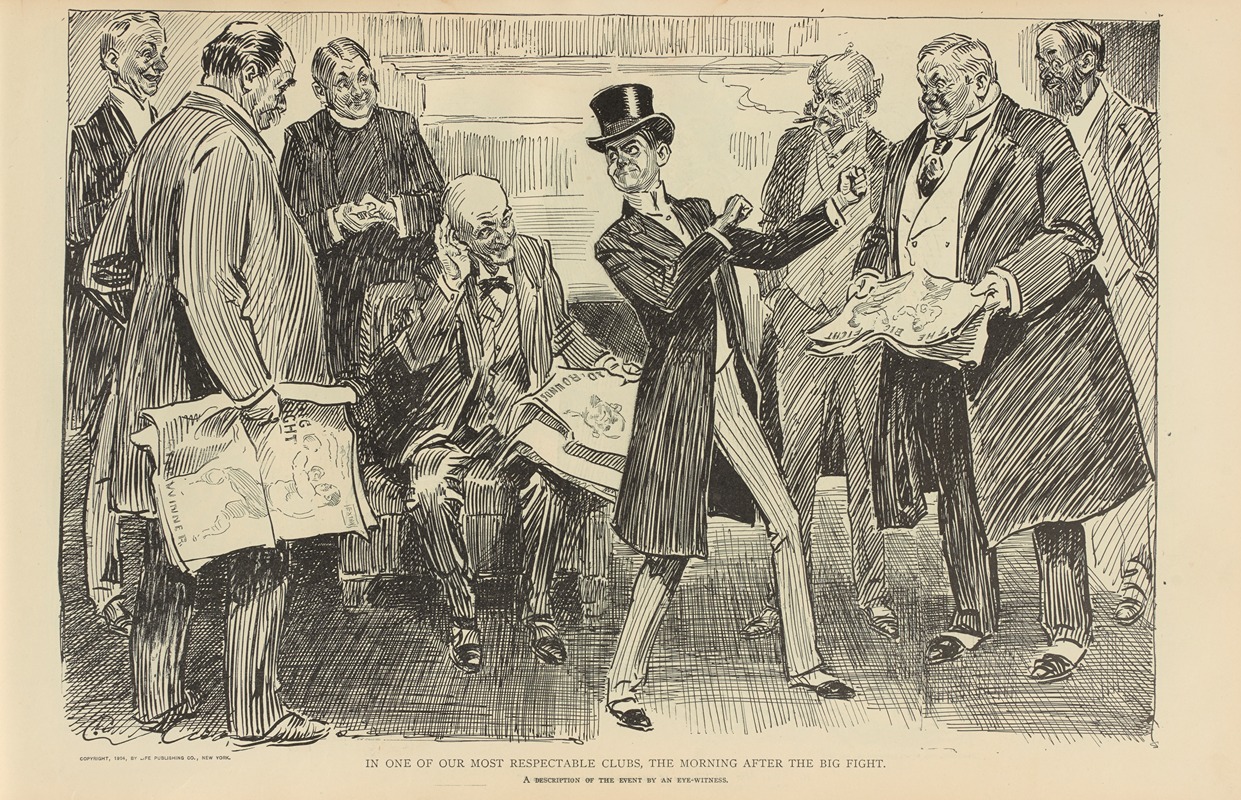
In one of our most respectable clubs, the morning after the big fight
A hand-painted replica of Charles Dana Gibson’s masterpiece In one of our most respectable clubs, the morning after the big fight, meticulously crafted by professional artists to capture the true essence of the original. Each piece is created with museum-quality canvas and rare mineral pigments, carefully painted by experienced artists with delicate brushstrokes and rich, layered colors to perfectly recreate the texture of the original artwork. Unlike machine-printed reproductions, this hand-painted version brings the painting to life, infused with the artist’s emotions and skill in every stroke. Whether for personal collection or home decoration, it instantly elevates the artistic atmosphere of any space.
Charles Dana Gibson was an influential American illustrator, best known for his creation of the "Gibson Girl," a representation of the idealized American woman at the turn of the 20th century. His illustrations captured the spirit and societal norms of his time, often with a touch of humor and satire. One of his notable works is the drawing titled "In one of our most respectable clubs, the morning after the big fight."
This illustration, like many of Gibson's works, was published in a popular magazine of the era, such as Life, where he was a regular contributor. The drawing depicts a scene in a gentlemen's club, a common social setting for affluent men during the late 19th and early 20th centuries. These clubs were exclusive spaces where men gathered to socialize, discuss business, and engage in leisure activities away from the domestic sphere.
The scene in "In one of our most respectable clubs, the morning after the big fight" is characterized by its attention to detail and the expressive nature of its characters. Gibson was known for his ability to capture the nuances of social interactions and the subtleties of human expression. In this particular illustration, the aftermath of a "big fight" is evident in the demeanor and appearance of the club's patrons. The men are depicted in various states of disarray, suggesting the intensity of the previous night's events.
Gibson's work often included social commentary, and this piece is no exception. By setting the scene in a "respectable" club, Gibson may be highlighting the contrast between the outward respectability of these institutions and the less decorous behavior that sometimes occurred within them. The illustration serves as a humorous yet pointed observation of the social dynamics and cultural norms of the time.
The popularity of Gibson's illustrations was significant, as they were widely circulated in magazines and periodicals, reaching a broad audience. His work not only entertained but also offered a reflection of contemporary society, capturing the complexities and contradictions of the era. The "Gibson Girl" became an iconic symbol, influencing fashion and popular culture, and Gibson's other works, including this club scene, contributed to his reputation as a keen observer of American life.
Overall, "In one of our most respectable clubs, the morning after the big fight" exemplifies Charles Dana Gibson's artistic style and his ability to convey social commentary through illustration. His work remains an important part of American art history, providing insight into the cultural landscape of the late 19th and early 20th centuries.





